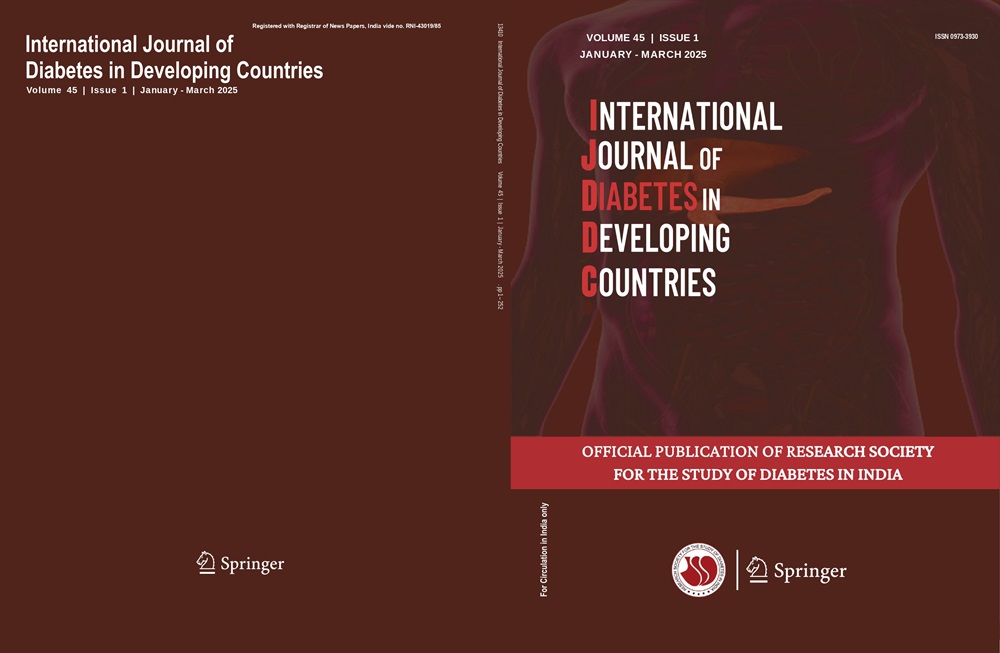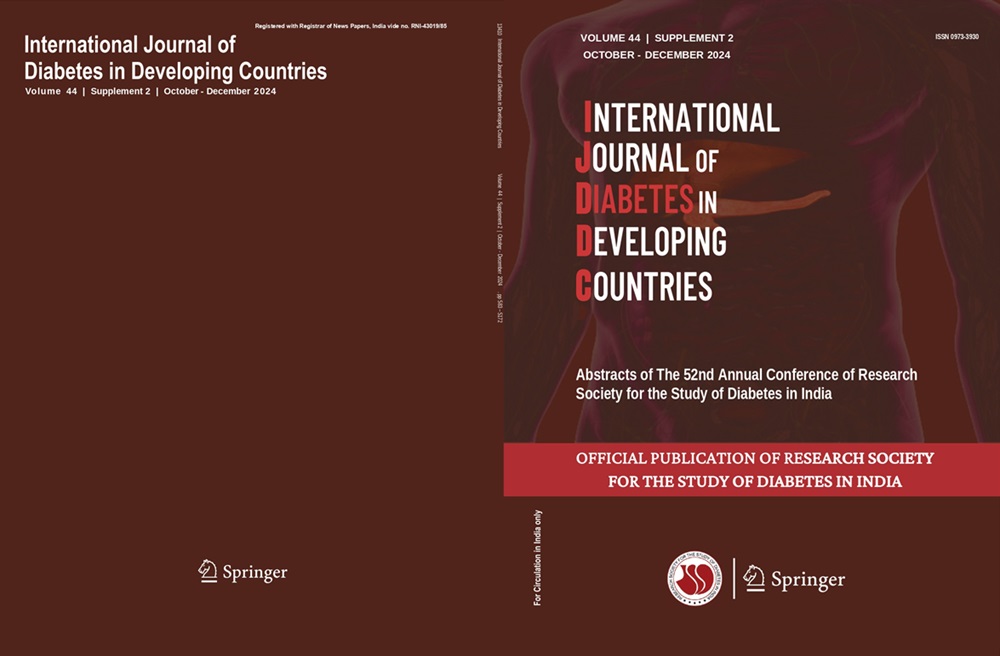M. Chawla, B. M. Makkar, K. D. Modi, S. Phatak, S. Waghdhare, A. Satpathy, A. Gadekar, D. Chodankar, C. Trivedi, K. M. Prasanna Kumar, V. Mohan
Keywords
Glycemic control • Hypoglycemia • Insulin glargine • Type 2 diabetes mellitus • Real world evidence • India
Abstract
Objective This retrospective longitudinal study analyzed the demographic profile, insulin usage pattern, and outcomes of insulin-naive adults with type 2 diabetes mellitus (T2DM) who initiated insulin glargine.
Methods The study included 1006 insulin naive T2DM individuals aged ≥ 18 years, treated with any insulin type between January 2016 and December 2018, using electronic medical records.
Results Majority of participants were men (55.8%) with a mean age of 59.8 ± 11.9 years and average T2DM duration of 12.0 ± 6.6 years. Insulin glargine was the most commonly used insulin (66.9%), followed by insulin aspart (16.4%), insulin degludec (15.1%), human insulin (11.1%), and insulin isophane (9.2%). At baseline, the mean glycated hemoglobin (HbA1c) was 8.9 ± 1.9%, mean fasting plasma glucose (FPG) was 190 ± 59 mg/dL, and mean post-prandial plasma glucose (PPG) was 264 ± 78 mg/dL. In the insulin glargine group, baseline HbA1c was 9.0 ± 1.7%, FPG was 196 ± 62 mg/dL, and PPG was 283 ± 81 mg/dL. Throughout the study, there was an improvement in HbA1c, FPG, and PPG levels in the insulin glargine group. Body weight remained relatively stable, and the number of hypoglycemic events was minimal and non-life-threatening.
Conclusion The REALITY study in India demonstrated that initiating basal insulin treatment in insulin-naive individuals with T2DM led to improved glycemic parameters over a 12-month period.




